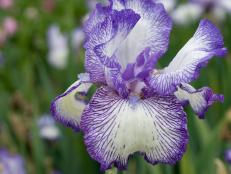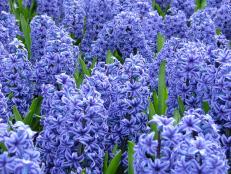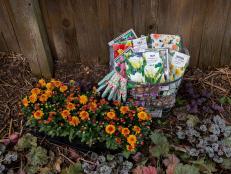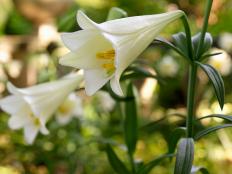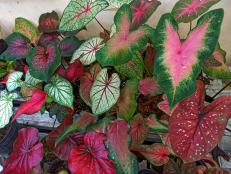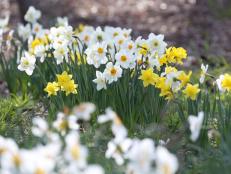Japanese Irises
Learn about Japanese iris, a type of iris that grows from bulbs.

Give your garden a dose of stately elegance by tucking Japanese iris into the planting mix. This summer-blooming iris opens flowers from June into July. The blossoms on Japanese iris offer shades of purple, white, lavender, rose and violet-red. The blooms feature traditional iris flower characteristics, such as upright standard petals in the center and dangling falls petals beneath. In Japanese iris, though, the standard petals are not too tall, while the falls petals are fat and long. The effect is a full, luxurious flower that seems to float atop stems.
Give Japanese iris a spot in full sun to part shade. In warmer zones, protect plants with light shade during the hottest part of the day. This is the tallest of the iris flowers. Plants grow 24 to 48 inches tall and 18 to 24 inches wide. Leaves have a distinct rib running down the center that creates an attractive texture in the garden.
Plants are hardy in Zones 4 to 9. The secret to growing Japanese iris is supplying sufficient moisture to plant roots. These plants crave moisture. In their native land of Japan, this group of iris plants are often seen growing alongside ponds and streams. The tricky part is that while Japanese iris can tolerate up to 6 inches of standing water during the growing season, in winter these beauties need their roots to be dry.
To meet these difficult growing conditions, many gardeners grow Japanese iris in containers. In summer, during the growing season, they sink pots halfway into soil beside water gardens or even place pots into water gardens so that the bottom half of each container is underwater. As fall arrives, lift the pots and shift them to a drier location. In colder zones, bury the pot in a planting bed or vegetable garden to insulate roots. You could also store the pot in a cool, dry place for winter.
Another option is to raise Japanese iris at the base of downspouts, where rainfall creates somewhat soggy conditions at times. Provide additional water to Japanese iris plants during dry seasons. To grow Japanese iris in traditional planting beds, keep soil well-watered at all times. Japanese iris growth is a direct response of available moisture. When water is insufficient, plants grow and bloom poorly.
Japanese iris have one characteristic that is somewhat unusual. The roots produce a substance in soil that ultimately inhibits the plant’s growth, as well as the growth of other iris species. When plant clumps become thick or growth or flower number diminishes, plan to dig and divide Japanese iris plants. This typically occurs every three to four years.
Replant divisions in new planting areas, unless you’re growing Japanese iris in a place where water moves through soil frequently, like along a stream bed or at the bottom of a downspout. In these situations, the water moves that growth-inhibiting material out of soil.







